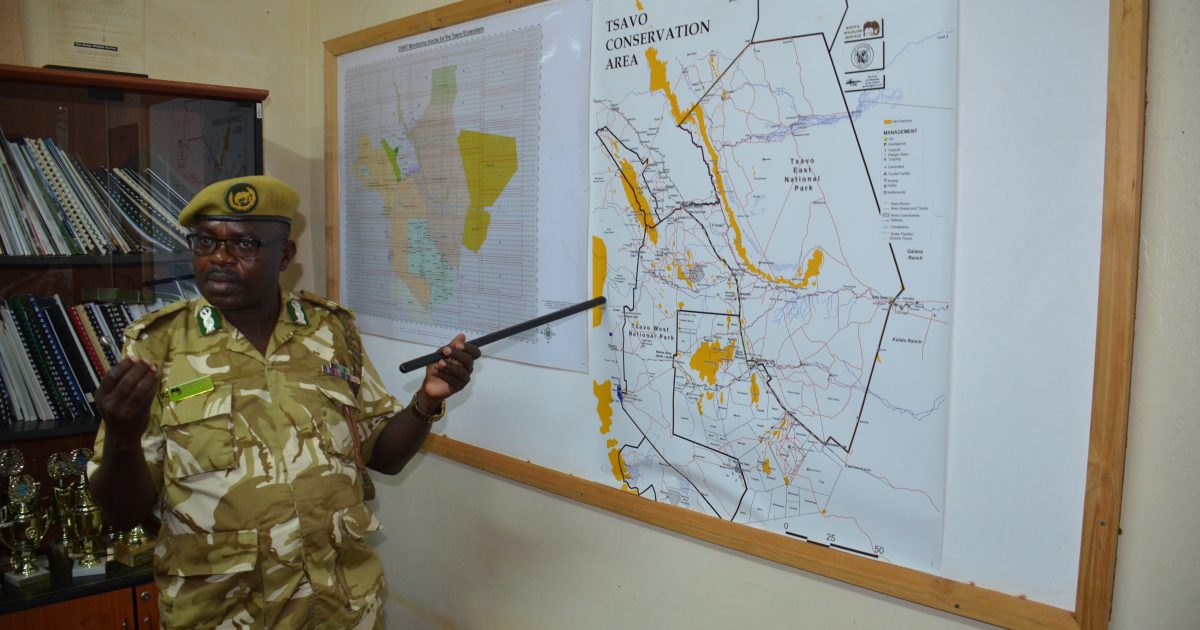Fire fighters from Kenya Wildlife Service (KWS) and conservation partners spent Friday night battling a huge wildfire that eventually ended up devastating 4,000 acres of grassland in Tsavo East National.
The fire started from Lebanon village along the Nairobi-Mombasa Highway. The sparsely-populated highway village borders Tsavo East National Park, some 30 kilometres from Voi town.
Speaking to KNA Sunday, Tsavo Conservation Area Assistant Director Mr. Robert Njue said the fire started on Friday mid-morning hours and was successfully contained at on Saturday morning.
The operation brought together firefighter from several agencies including KWS, David Sheldrick Wildlife Trust, Wildlife Works and KWS’s Law Enforcement Academy at Manyani.
“Our teams successfully managed to put down the fires at 200am. They also did a post-fire rapid surveillance to ensure there is no risk of secondary outbreak,” he added.
Reports say the extremely dry savannah conditions with thousands of acres of dry grass in the park fueled the inferno. By Friday noon, huge clouds of billowing smoke could be seen from as far as Voi town and beyond.
Powerful gusts of winds blowing across the park further fanned the blaze, complicating the containment efforts to halt the fire from spreading. At one time, the fires were said to be so fierce that firefighters were nearly overwhelmed due to rapidly changing directions of the fire.
“The park has a lot of dry grass. This made the fire spread quickly. The situation was worsened by strong winds that threatened to spread if further,” he said.
However, vital multi-billion infrastructure including the Mombasa-Nairobi oil pipeline and Standard Gauge Railway (SGR) the cut across the park remained unaffected by the fire.
Mr. Njue said that there were no animal casualty from the incident. A post-fire reconnaissance teams found no sign of any animal having been burned. There are reports that animals in the affected zone had fled deeper into the park ahead of the ravaging flames.
On Saturday morning, KWS conducted a comprehensive air reconnaissance to ensure that there was no risk of any fire outbreak in the area.
The KWS boss added that many firebreaks including the ones installed along the oil pipeline routes stole the momentum and intensity from the fire and made it possible for firefighters to manage the blaze.
Already, KWS investigators and intelligence units are following crucial leads on what caused the fire. Preliminary air-surveillance data has narrowed down to specific homesteads at Lebanon village where the initial fire breakout trail leads to. The ground teams have been dispatched to the village to cross-check the aerial data.
“We are following crucial leads to find whoever did this and establish why,” said Njue.
Ground and air-surveillance have been enhanced to monitor and combat risky activities in Tsavo East and West National Parks, Chyullu National Park and South Kitui that might trigger another outbreak.
By Wagema Mwangi
Wildfires destroy 4,000 acres of Tsavo East National Park, KWS say fire contained




